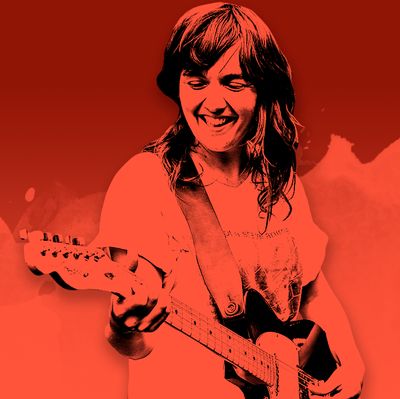
Ahead of the 2016 Grammys, Vulture spoke with a handful of nominees about the songs from their latest albums that were toughest to write. Up next is Melbourne-based songwriter and Milk! Records co-founder Courtney Barnett. The unfussy Best New Artist nominee’s debut album, Sometimes I Sit and Think, and Sometimes I Just Sit has a shaggy, conversational ease that betrays the complexity of its opener, “Elevator Operator.” It took Barnett five years to finish that song, which is a story of her friend Oliver Paul going up Melbourne’s historic Nicholas Building to look out over the city, only to be approached by an upper-class lady who assumed he was intending to throw himself off the roof.
“Elevator Operator” came from when I was living on Easey Street in Collingwood, and I was playing around town in a duo with my friend Oliver, who now plays in the Finks. He came over for dinner one night, and he told me this story about how he’d gone into the city and gone up the top of the Nicholas Building: When he was in the elevator, this lady accosted him and thought he was trying to commit suicide. She tried to talk him out of it. He was a bit shocked. It was really out of the blue — he went there all the time. And I think he was a bit like, Do I look like I’m having a bad time? It’s a few seconds of being in an elevator together — how had she totally concocted this story? It was also a bit surreal and absurd, so he laughed.
I was like, “Wow, this is crazy, she’s totally misinterpreted the situation” — but it was kind of funny. That’s basically what the song is about, with a bit of poetic license. But I just couldn’t finish it. I had the start of it sitting there for, like, five years, and then, when I wrote the album, I went back to it and made an ending. That was a long process.
The other reason it was kinda difficult is because it was this third-person point of view, which is different from my other songwriting — it’s normally so personal and quite real. In this case, I had this one segment of this story and had to make the rest up from other experiences. I had to paint a picture of who the lady was to make the story make sense. He described her to me as one of those upper-middle-class people who look down their noses at you a bit and judge you because you’re a bit scrappily dressed — they think maybe you’re homeless or something — so I went with that, and took experiences my friends and I have had, and drew up this very judgmental lady. I probably wrote the first half of it, with no chorus — maybe the first two verses. Then I shelved it for four years.
I have a lot of songs I do that with. Every now and then I would play it — I’d have a writing burst and come back to it, but I didn’t know where the story was going, and because it was such a narrative, I couldn’t just sing along and see what happened. It really needed direction. Sometimes when I’m writing I just sing and see what comes out of my subconscious, but that didn’t really work because it was such a distinct story.
I think I was still finishing lines of it until I was in the studio [recording Sometimes I Sit and Think …]. I showed all of the songs to the band a couple of weeks during preproduction, while we were figuring out how to record it. We played it through for the first time, and I think that probably helped a little bit. We got the drums into that really straight beat, and part of it reminded me of Lou Reed. There’s a line in my song, “He waits for an elevator, one to nine” — what’s that Velvets song, “Up to Lexington, 125,” [sings] “Waiting for the Man.” And I remember, I had a moment when I came up with that lyric, like a kind of connecting joke, this really subtle nod that made me think of that song. That helped me figure it out. The song is basically only the two verses, and once I got the chorus it all came together.
I ended up putting it as track one for a couple reasons. One was that it was a little bit different, and I liked that the first song was not from my perspective because so many of my other songs had been. But also it’s quite a slow song — the chorus doesn’t come in for ages — and it builds up. It feels like it’s a song going nowhere, like a train going along or something. When I was doing the track listing, it just felt like an interesting start.

